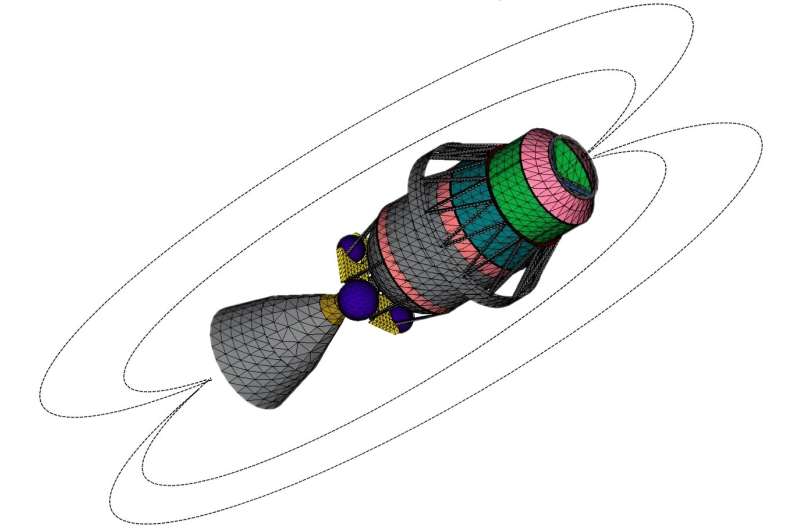This article has been reviewed according to Science X's editorial process and policies. Editors have highlighted the following attributes while ensuring the content's credibility:
fact-checked
trusted source
proofread
Understanding a satellite's death spiral

Down on the ground, death equals stillness—but not in space. Abandoned satellites are prone to tumble in unpredictable ways, and an ESA project with the Astronomical Institute of the University of Bern sought to better understand this behavior.
ESA's Clean Space initiative has plans to remove dead satellites from highly trafficked orbits. The preferred method of "Active Debris Removal" involves grabbing the target object, in which case knowledge of its precise orientation and motion will be vital. So the need to understand the tumbling that almost all satellites and rocket bodies undergo after their mission end-of-life is clear.
The project combined optical, laser ranging and radar observations to refine an existing "In-Orbit Tumbling Analysis" computer model, aiming to identify, understand and predict the attitude motion of a fully defunct satellite within a few passes. More than 20 objects were observed during a two-year campaign.
The long list of perturbation triggers includes "eddy currents" as internal magnetic fields interact with Earth's magnetosphere, drag from the vestigial atmosphere, gravity gradients between the top of an object and its bottom, outgassing and fuel leaks, the faint but steady push of sunlight—known as "solar radiation pressure"—micrometeoroid and debris impacts, even the sloshing of leftover fuel.
Among the study findings was rocket bodies and satellites in lower orbits are mostly influenced by gravity gradients and eddy currents, while up at geostationary altitudes, satellites with large solar panels are sensitive to solar radiation pressure.
Provided by European Space Agency





















